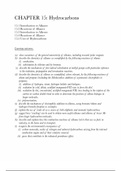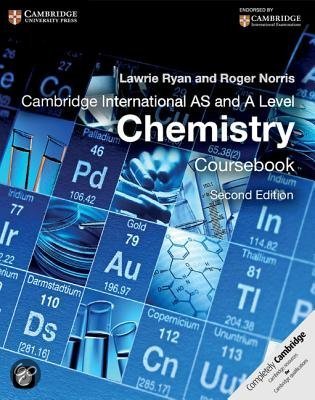CHAPTER 15: Hydrocarbons
15.1 Introduction to Alkanes
15.2 Reactions of Alkanes
15.3 Introduction to Alkenes
15.4 Reactions of Alkenes
15.5 Uses of Hydrocarbons
Learning outcomes:
(a) show awareness of the general unreactivity of alkanes, including towards polar reagents.
(b) describe the chemistry of alkanes as exemplified by the following reactions of ethane:
(i) combustion.
(ii) substitution by chlorine and by bromine.
(c) describe the mechanism of free-radical substitution at methyl groups with particular reference
to the initiation, propagation and termination reactions.
(d) describe the chemistry of alkenes as exemplified, where relevant, by the following reactions of
ethene and propene (including the Markovnikov addition of asymmetric electrophiles to
propene):
(i) addition of hydrogen, steam, hydrogen halides and halogens.
(ii) oxidation by cold, dilute, acidified manganate(VII) ions to form the diol.
(iii) oxidation by hot, concentrated, acidified manganate(VII) ions leading to the rupture of the
carbon-to-carbon double bond in order to determine the position of alkene linkages in
larger molecules.
(iv) polymerisation.
(e) describe the mechanism of electrophilic addition in alkenes, using bromine/ethene and
hydrogen bromide/propene as examples.
(f) explain the use of crude oil as a source of both aliphatic and aromatic hydrocarbons.
(g) suggest how ‘cracking’ can be used to obtain more useful alkanes and alkenes of lower Mr
from larger hydrocarbon molecules.
(h) describe and explain how the combustion reactions of alkanes led to their use as fuels in
industry, in the home and in transport.
(i) recognise the environmental consequences of:
(i) carbon monoxide, oxides of nitrogen and unburnt hydrocarbons arising from the internal
combustion engine and of their catalytic removal.
(ii) gases that contribute to the enhanced greenhouse effect.
,15.1 Introduction to Alkanes
What is an alkane?
1) A hydrocarbon is a compound containing carbon and hydrogen atoms only.
Examples of hydrocarbons are alkanes, alkenes, alkynes and arenes.
2) Alkanes are saturated hydrocarbons, the carbon atoms are joined to each
other via single covalent bond only. They form the homologous series with a
general formula CnH2n+2.
3) Physical properties of alkanes:
i. Alkanes are non-polar, thus they are soluble in non-polar solvents like CCl4.
They are, in general, insoluble and less dense than water.
ii. The boiling point of straight-chain alkanes increases with the size of
molecule. This is because the number of electrons in each molecule
increases, resulting in the increased strength of van der Waals'. Thus more
energy is required to break these forces.
iii. For a branched alkane, it is more volatile and its boiling point is lower than
its counterpart with the same number of carbon atoms. This is because they
are more spherical and have a lower surface area. Thus less temporary dipoles
can be set up and the van der Waals' forces are weaker, less energy is required
to overcome it.
iv. The density of liquid alkanes increases slightly. The mass of each
succeeding molecule increases but due to the increased strength of van der
Waals' forces, the molecules are more closer together. This results in higher
ratio of mass/volume.
, 4) Cycloalkanes are alkanes that joined up as a ring. The
smallest possible cycloalkane is cyclopropane.
Cycloalkanes have two hydrogen less than the
corresponding straight-chai alkanes.
15.2 Reactions of Alkanes
Reactivity of alkanes
1) Alkanes are saturated and generally unreactive because they are non-polar,
hence they are unattractive towards nucleophiles and electrophiles.
2) Alkanes will only react with non-polar reagents in the presence of heat or
ultraviolet light.
Combustion
1) Alkanes undergo complete combustion under excess oxygen gas to give
carbon dioxide and water. For example:
CH4(g) + 2O2(g) → CO2(g) + 2H2O(g) ΔH° = -890 kJ mol⁻¹
2) In general,
3) Larger alkanes are more difficult to ignite. This is because alkanes only burn in
the gaseous state and larger alkanes have stronger van der Waals' forces that
hold them together. Therefore more energy is required to vaporise it.
4) When the supply of oxygen is limited, alkanes undergo incomplete
combustion. The possible products are carbon monoxide, carbon and water.
For example,
2CH4(g) + 3O2(g) → 2CO(g) + 4H2O(g) or
CH4(g) + O2(g) → C(s) + 2H2O(g)





